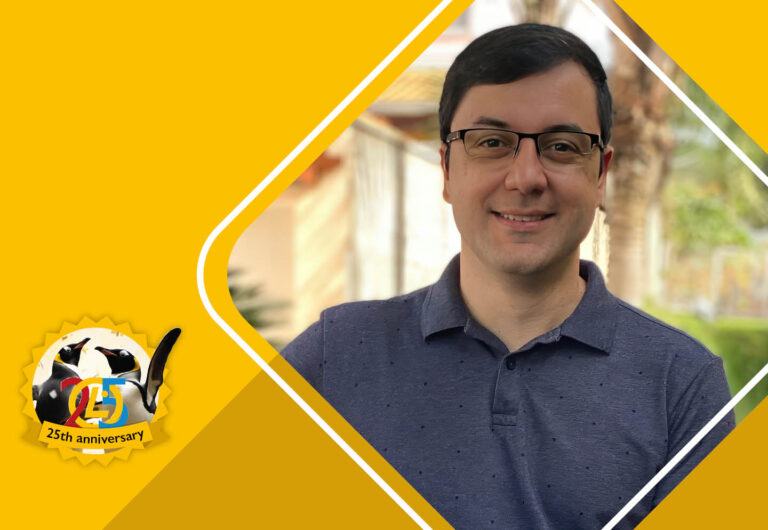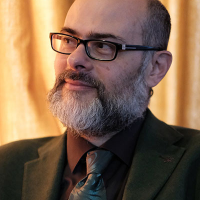Ricardo’s Journey and LPI’s Growth: 25 Years of Open Source

Ricardo, an IT professional and LPI community member, reflects on his path from student to open source advocate and shares his vision for the next 25 years.
Where were you 25 years ago?
In 1999, I was still a student, living with my parents and preparing to enter college to study Information Technology. At that time, I had already explored practically every course available in computer schools in my small town in the state of São Paulo, Brazil. I studied MS-DOS, Windows 95/98, Dreamweaver, Corel Draw, Visual Basic, and Delphi, and even worked as an assistant instructor. However, I hadn’t yet encountered GNU/Linux or free software.
How old were you when you started working with Linux?
I was 18 when I started college at Unicamp in 2000. Moving to a new city to study was a big change for me. I received a university scholarship and worked in the lab, where I was exposed to FreeBSD. The black screen of the terminal fascinated me. I didn’t know how to use it at first, but I watched closely as the staff performed administrative tasks.
One day, the lab’s web server, which used Microsoft IIS, kept getting hacked—likely by students. They gave me a stack of FreeBSD materials and asked me to rebuild the server with FreeBSD and Apache HTTPD. That was my first deep dive into open source. After a lot of studying and experimenting, I delivered the university’s new web server.
The next project was a print server with three dot matrix printers. I spent days learning how to configure Cups, compiled the kernel to handle multiple parallel ports, and successfully implemented the system. By 2002, I was 20 years old and already confident enough in Linux and FreeBSD to start an internship managing servers. That was the real start of my career.
What initially led you to Linux, and how has it shaped your career?
The way I started with Linux in college taught me the importance of curiosity and perseverance. It’s about asking questions, seeking understanding, and being unafraid to experiment. This mindset helped me grow professionally and inspired me to help others. Today, my primary focus is teaching, and I carry those lessons with me—sharing knowledge, guiding others, and fostering a sense of community.
Reflecting on 25 years, what moments in open source stand out to you?
For me, the adoption of virtualization was a game-changer. It revolutionized IT environments, making them more cost-efficient and operationally effective. Cloud computing and containerization followed, bringing even greater advancements. Automation and DevOps tools have taken this evolution further.
Throughout all of this, Linux and open source have been the backbone. Understanding these systems has been a critical differentiator for professionals, including myself. It’s amazing to see how far we’ve come and exciting to think about what’s next.
What advice would you give to those new to Linux?
Starting with Linux can be challenging—learning the command line, navigating the variety of tools, and entering a competitive job market. But focus on building a solid foundation. Understand how Linux works and how other solutions integrate with it. This knowledge will set you apart.
If English isn’t your first language, start improving it now. It’s not easy, but mastering English opens doors to global opportunities. Finally, make the most of certifications. They’re not just study guides but a way to demonstrate your skills and value to the market.
Looking ahead, where do you think Linux will be in 5 and 25 more years?
Linux and open source have always been the foundation of IT infrastructure, and I believe this will continue. Eric Raymond said it best in The Cathedral and the Bazaar: “The world of closed-source software cannot win an evolutionary race against open-source communities.”
To ensure this vision continues, the open source community must stay active and vigilant. It’s not just about technological innovation but also maintaining the values and principles that have driven open source for the past 25 years. If we do this, I’m confident Linux will remain central to the technology ecosystem for decades to come.
What role do you see LPI playing in the next 5-to-25 years?
Technologies evolve rapidly, and LPI must ensure that its certifications and initiatives stay aligned with market needs. Maintaining strong connections with the community—students, professionals, universities, and businesses—is essential. By supporting professionals in their growth and keeping its programs relevant, LPI will continue to play a critical role in the future of open source.
Ricardo’s story highlights how curiosity, dedication, and community can shape a career and drive innovation. As we celebrate LPI’s 25 years, stories like his remind us of the shared journey that has brought Linux and open source to where they are today—and the exciting possibilities that lie ahead.
<< Read the previous post of this series | Read more LPI success stories here >>
